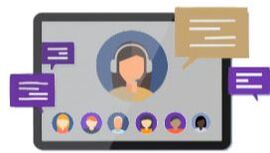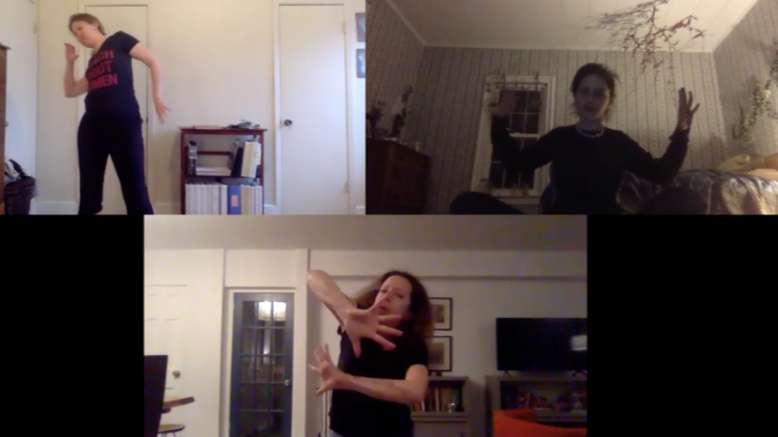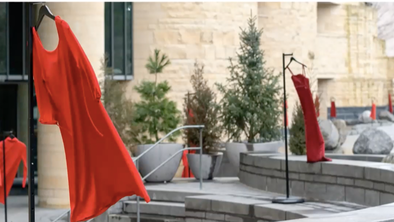|
We help K-12 educators integrate equity work, especially gender equity work, into every aspect of school life.
This year, we are providing teachers with an online course on six themes & questions for integrating anti-bias materials & practices into curriculum across departments. |
Welcome to TaW's Gender Equity Institute 2021
|
What is our goal?
We provide teachers (grades 6-12) with resources and practices to bring gender equity work into their classrooms. We use themes and questions to take a transdisciplinary approach so that our workshops are useful for teachers of every subject and a range of grade levels. Inclusive teaching is good teaching. While we focus on gender equity, we present material and practices to explore identity in all its facets and promote equity work across intersectional identities including race, class, ability, sexuality, country of origin, ethnicity, and age.
Who should participate?
Middle and high school teachers who want to advance justice, equity, and diversity in schools by teaching fuller, more accurate narratives of past and present. The Gender Equity Institute has particular appeal to classroom teachers looking to apply a firmer equity lens to curriculum and pedagogy. Because we focus on practices and resources that cut across disciplines, we invite teams of teachers from various departments at the same school to participate together.
What will participants get?
Teachers will walk away with a roadmap for integrating anti-bias and equity work into their discussions, lessons, and units. We offer everything from practical tips for having tough conversations to suggestions for text pairings and assessments. We even provide turnkey lesson plans and worksheets you can use with your own students the very next day. All of us are experienced K-12 educators with lots of ideas for we can use these six themes & questions to enrich our teaching.
It's not just about gender. We take an intersectional approach.
We reject the idea that humans should be bound by and limited by siloed identities. To explore gender without exploring say, race, ethnicity, or class, is to present a picture of reality that is incomplete to the point of being false. In all our lessons, we have been thoughtful about how to include many voices and explore facets of identity that often get shunted to the side in Euro-centric, white and masculinist curricula. We have done our best to reject these conventional barometers, put people of color at the center of our inquiry, and draw on intersectional approaches.
Inclusive teaching is good teaching. We don't define gender by biology–we welcome and nurture explorations of trans identities in all that we do. While we focus on gender equity, we present material and practices to explore identity in all its facets and promote equity work across intersectional identities including race, class, ability, sexuality, country of origin, ethnicity, and age.
Inclusive teaching is good teaching. We don't define gender by biology–we welcome and nurture explorations of trans identities in all that we do. While we focus on gender equity, we present material and practices to explore identity in all its facets and promote equity work across intersectional identities including race, class, ability, sexuality, country of origin, ethnicity, and age.
How is it organized?
Each session is organized around an equity theme and question. These are your roadmap for integrating equity work into every aspect of your teaching. In keeping with our intersectional approach, we use equity themes that apply to power in many forms–not just gendered power.
A strong equity theme
A strong equity theme
- sneaks up on you
- applies to power in many forms
- moves easily through different kinds of stories (fiction, nonfiction, folktales, advertising, gossip, anecdotes, scientific studies)
- invites students to look at all sorts of things in a new way
What are the themes?
Invisibility—What keeps some people and experiences from being seen?
Carelessness—Why do some people get to be careless while others do not?
Normal--How does the media reflect and enforce narrow cultural norms?
Sacrifice—How does [identity] shape the ways individuals share work in hard times?
Victims/Heroes—Who benefits from a culture of fear?
Resistance—What does resistance in a dominating culture look like?
Download printable with all 6 questions: 1 pager (handout) * 6 pages (wall or bulletin board)
Carelessness—Why do some people get to be careless while others do not?
Normal--How does the media reflect and enforce narrow cultural norms?
Sacrifice—How does [identity] shape the ways individuals share work in hard times?
Victims/Heroes—Who benefits from a culture of fear?
Resistance—What does resistance in a dominating culture look like?
Download printable with all 6 questions: 1 pager (handout) * 6 pages (wall or bulletin board)
An online course in Six Sessions
Each session is designed around a theme and a question and has three parts:
- an e-lesson you can watch on your own schedule,
- an interactive webinar, where you can come with questions and hear different scenarios for incorporating this theme into your teaching. You can see the dates/times and sign up below.
- Finally, some teachers have agreed to provide tailored master classes and coaching upon request to teachers who would like to dive more deeply into this work. Contact us here to set that up.
The Gender Equity Institute 2021
Session 1
|
Session 2
|
Session 3
|
Session 4
|
Session 5
|
Session 6
|
Get these resources for your classroom.
Purchase any of the resources below on Amazon after clicking our link, and TaW gets a 15% referral fee. That money goes directly to paying the teachers involved in the Gender Equity Institute. Thank you for your support!









